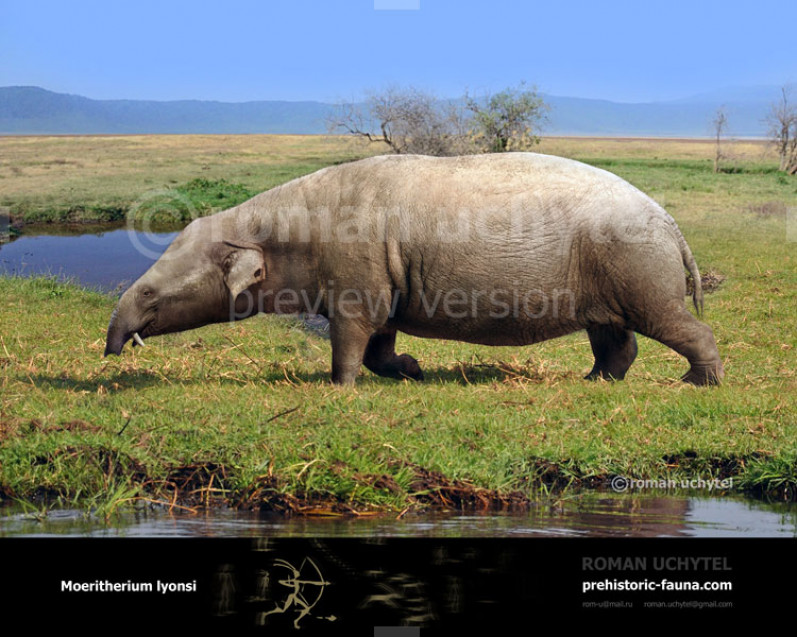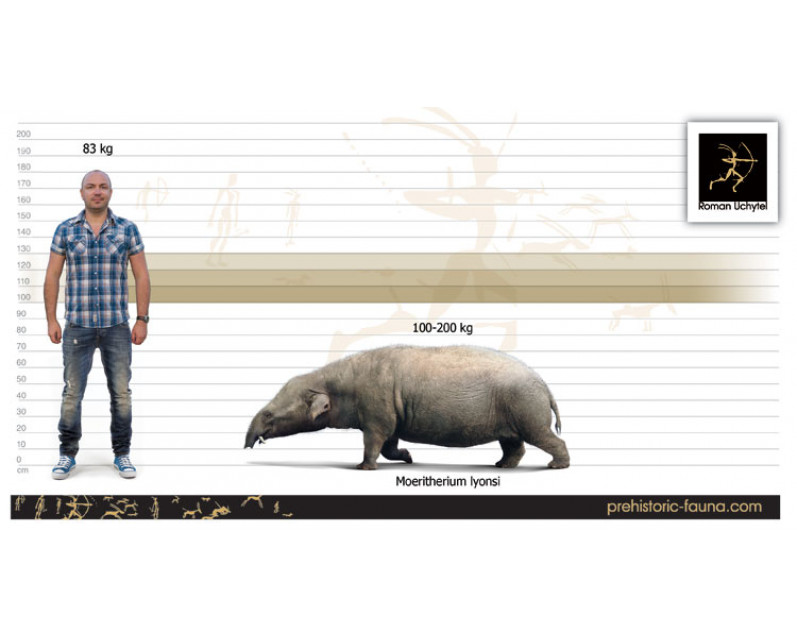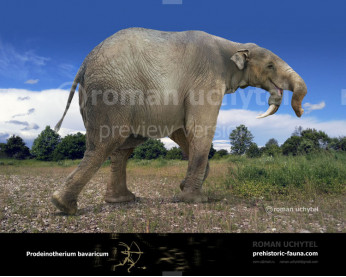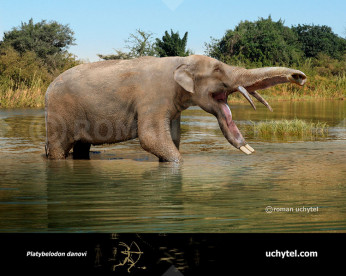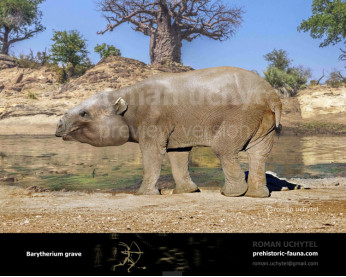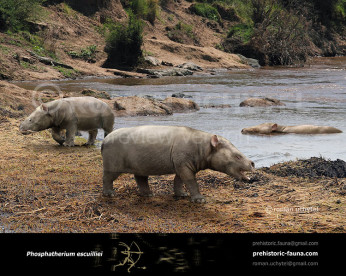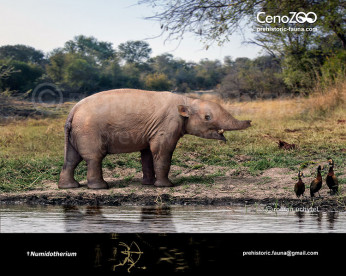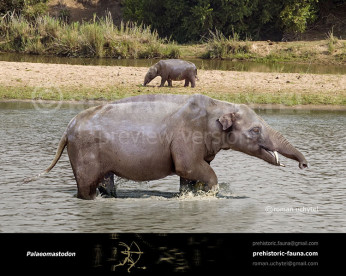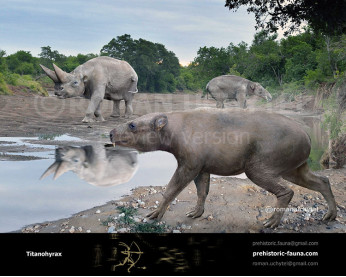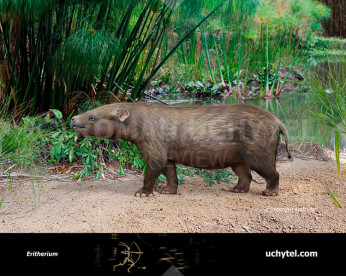Moeritherium
7575Moeritherium (Moeritherium Andrews, 1901)
Order: Proboscidea
Family: Moeritheriidae
Temporal range: during the Late Eocene - Early Oligocene (North Africa).
Dimensions: length - 2 m, height - 70 сm, weight - 200 kg
A typical representative: Moeritherium lyonsi Andrews, 1901.
Moeritherium ('the beast from Lake Moeris') is a genus consisting of several species. These prehistoric mammals are related to the elephant and, more distantly, the sea cow. They lived during the Eocene epoch. The Moeritherium species were pig-like animals that lived about 37-35 million years ago, and resembled modern tapirs or pygmy hippopotamuses. They were smaller than modern elephants, standing only 70 centimetres high at the shoulder and were about 3 metres long. They are believed to have wallowed in swamps and rivers, filling the ecological niche now filled by the hippopotamus. The shape of their teeth suggest that they ate soft water vegetation. The second incisor teeth formed small tusks, although these would have looked more like the teeth of a hippo than a modern elephant.
Moeritherium (Moeritherium Andrews, 1901)
Order: Proboscidea
Family: Moeritheriidae
Temporal range: during the Late Eocene - Early Oligocene (North Africa).
Dimensions: length - 2 m, height - 70 сm, weight - 200 kg
A typical representative: Moeritherium lyonsi Andrews, 1901.
Moeritherium ('the beast from Lake Moeris') is a genus consisting of several species. These prehistoric mammals are related to the elephant and, more distantly, the sea cow. They lived during the Eocene epoch. The Moeritherium species were pig-like animals that lived about 37-35 million years ago, and resembled modern tapirs or pygmy hippopotamuses. They were smaller than modern elephants, standing only 70 centimetres high at the shoulder and were about 3 metres long. They are believed to have wallowed in swamps and rivers, filling the ecological niche now filled by the hippopotamus. The shape of their teeth suggest that they ate soft water vegetation. The second incisor teeth formed small tusks, although these would have looked more like the teeth of a hippo than a modern elephant.

